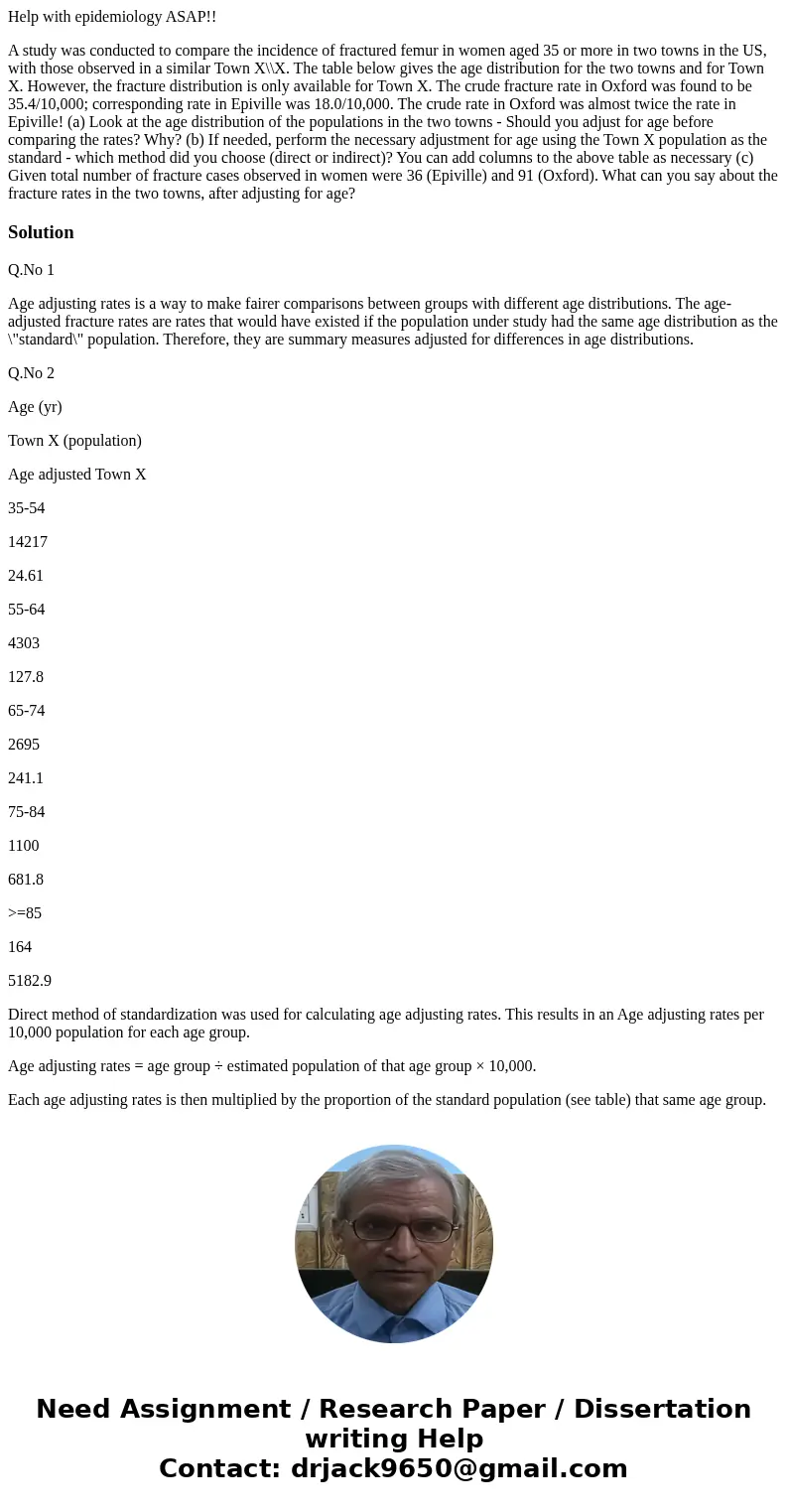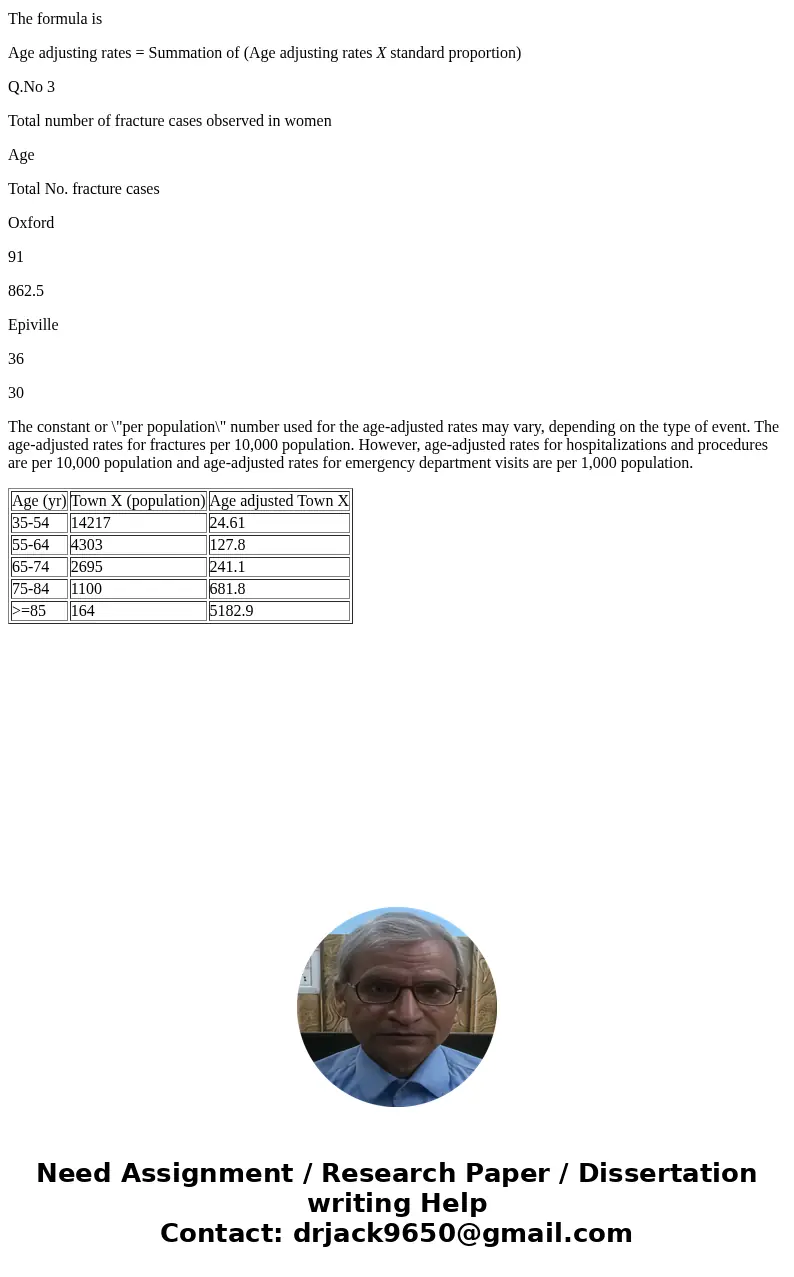Help with epidemiology ASAP A study was conducted to compare
Help with epidemiology ASAP!!
A study was conducted to compare the incidence of fractured femur in women aged 35 or more in two towns in the US, with those observed in a similar Town X\\X. The table below gives the age distribution for the two towns and for Town X. However, the fracture distribution is only available for Town X. The crude fracture rate in Oxford was found to be 35.4/10,000; corresponding rate in Epiville was 18.0/10,000. The crude rate in Oxford was almost twice the rate in Epiville! (a) Look at the age distribution of the populations in the two towns - Should you adjust for age before comparing the rates? Why? (b) If needed, perform the necessary adjustment for age using the Town X population as the standard - which method did you choose (direct or indirect)? You can add columns to the above table as necessary (c) Given total number of fracture cases observed in women were 36 (Epiville) and 91 (Oxford). What can you say about the fracture rates in the two towns, after adjusting for age?Solution
Q.No 1
Age adjusting rates is a way to make fairer comparisons between groups with different age distributions. The age-adjusted fracture rates are rates that would have existed if the population under study had the same age distribution as the \"standard\" population. Therefore, they are summary measures adjusted for differences in age distributions.
Q.No 2
Age (yr)
Town X (population)
Age adjusted Town X
35-54
14217
24.61
55-64
4303
127.8
65-74
2695
241.1
75-84
1100
681.8
>=85
164
5182.9
Direct method of standardization was used for calculating age adjusting rates. This results in an Age adjusting rates per 10,000 population for each age group.
Age adjusting rates = age group ÷ estimated population of that age group × 10,000.
Each age adjusting rates is then multiplied by the proportion of the standard population (see table) that same age group.
The formula is
Age adjusting rates = Summation of (Age adjusting rates X standard proportion)
Q.No 3
Total number of fracture cases observed in women
Age
Total No. fracture cases
Oxford
91
862.5
Epiville
36
30
The constant or \"per population\" number used for the age-adjusted rates may vary, depending on the type of event. The age-adjusted rates for fractures per 10,000 population. However, age-adjusted rates for hospitalizations and procedures are per 10,000 population and age-adjusted rates for emergency department visits are per 1,000 population.
| Age (yr) | Town X (population) | Age adjusted Town X |
| 35-54 | 14217 | 24.61 |
| 55-64 | 4303 | 127.8 |
| 65-74 | 2695 | 241.1 |
| 75-84 | 1100 | 681.8 |
| >=85 | 164 | 5182.9 |


 Homework Sourse
Homework Sourse